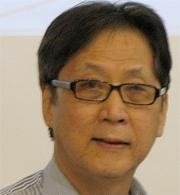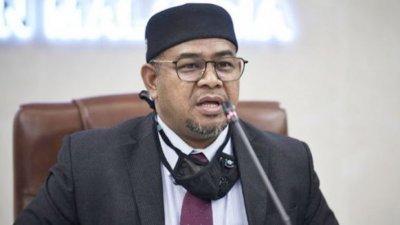马来政客一再指责母语源流学校是导致国民不团结的主要根源,也是导致族群间缺乏融合的原因,成功地分散了马来民众的注意力,转移了马来教育领域面对著的更重要问题。
最近,对母语源流学校的抨击,来自于青年和体育部副部长旺阿末费沙,他说,土团党青年团支持废除母语学校。这位新任的土团党青年团团长说,母语源流学校没有培养出具有“强大国族身份”的学生。
在这之前,伊党妇女组副主席莎拉米雅在去年6月的党大会上,也促请政府关闭母语源流学校。“伊党妇女组有个愿望,不愿看到华文成为大马的第二语言。我们希望第二语言是《可兰经》的语言,这些语言一直被人们所忽视,导致一些穆斯林对《可兰经》一无所知。”
这些马来政治领袖没有提到的现实是,国小更有可能是酝酿种族不容忍和国民不团结的主要温床。
师生结构趋向单元
国小校方恶待和边缘化少数族裔学生而引起议论的新闻,就时有所闻。除了所谓的种族和宗教歧视外,国小也普遍存在以下缺点:更加强调以马来人和伊斯兰为中心的课程,这与学校本应作为培养学生知识和思维能力的目标背道而驰;学术水平较低;领导和管理能力有待加强;较少语言技能学习机会。
不仅是非马来人的家长不看好国小,许多马来父母也是如此。特别是在最近十年,明显的趋势是,在有华小的地方,一些马来家长会选择让孩子就读华小,而非国小。
因此,马来政客拒绝承认或接受这一趋势,即母语学校或国民型学校,实际上在学生结构上变得更多元化。相比之下,国小──包括那些过去曾是杰出的重点学校,如城市地区的教会学校,不管在教职员和学生的种族结构上,日趋单元。
以下是国内教育发展趋势的一些事实和数据:
=在269万小学学生中,政府学校占了98%,私立学校为2%。政府学校学生中,77%是进入以国语为教学媒介语的国小,20%是进入以华语为媒介语的华小,另3%是进入以泰米尔语为媒介语的泰小。
=学校有种族区分化趋向。华裔学生进入华小的比例从2000年的92%上升到2011年的96%。同期,印裔学生进入泰小的比例也从47%增长到56%。在国小,97%的学生是土著。
=华小学生的族群结构变得更多元,而国小学生结构则趋向单元。估计华小的非华裔学生有19%,主要是土著,而且这趋势一直在稳定增长。
=尽管入读不同源流学校,但各族的学生依然能广泛精通马来文。如果掌握马来文能力,被视为族群融合的重要工具,那么母语源流学校的存在,并没有带来负面的影响。
因此,指责母语源流教育是破坏民族团结或融合的假设,须给予全面的驳斥。
首先,国民团结是一个模糊的概念,对不同的人意味著不同的事物。
其次,即使有各方同意可接受的定义,也没有证据表明母语源流学校破坏了国民团结或融合。同样,也没有证据表明国小在国民团结方面,比母语源流学校,更能发挥作用。实际上,许多马来人也认为目前具有宗教倾向的国小,阻碍了国民团结。
最后,必须指出的是,由联合国教科文组织和其他教育机构进行的研究表明,在进入双语或多语教育体系前,学生如能先以母语学习,将取得更好成效。
各方也几乎都认同,马来西亚人口和文化的多样性,是我们身份建构的基础,也是当今全球化世界竞争中的优势来源。
反对华小者不明白的事,许多普通百姓都了解。因此,这些人行施《宪法》赋予的自由选择权利,在不同的源流小学中,选择自己所要的。
譬如,在邻近夜市的马来摊位购买炸鸡时,年轻摊贩和他的妻子非常亲切问我是否当地人。我也与摊主寒暄,谈到在摊位上帮忙的儿子。他说他有四个孩子,全部都读华小,之前是在华人的幼稚园上学。没有所谓的种族分化、缺乏国民团结和非马来人的主导问题,也不担心失去马来人/伊斯兰的身份认同。
摊主说,把孩子送到华小的理由,是明智且合乎逻辑的──因比国小有更高的学术水准,以及中文对于未来生计和职业发展的重要性。
国民团结解决方案
因此,教育部应进行一项调查,华小虽然从联邦政府获得的财政资助和人员分配都较少,但为何许多马来人和其他非华裔族群,更愿意将他们的孩子送入华小。但这样的调查永远不会发生,因为其结果在政治上可能过于震撼。
归根结底,如果决策者真正关心不同族群间学生(和教学人员)的交流,其可在确保父母的教育选择权和宪法合法性下,提出具有成本效益且无颠覆现有体制的解决方案,就是让各源流学校、宗教学校共处同一个校园,并让学生在体育、艺术、音乐、生活技能和非核心科目上,一起上课。这解决方案不需要拥有高深的火箭科学知识,只需常识。
《国小才是不团结更大根源》(National Schools - Not Mother Tongue Schools - Are The Greater Source Of Disunity)原文:
A recurring accusation by Malay politicians which has successfully distracted the Malay public from focusing on the more important problems of Malay education is that vernacular schools are the main source of national disunity and lack of integration in the country.
The latest attack against these schools comes from Deputy Youth and Sports Minister Senator Wan Ahmad Fayhsal Wan Ahmad Kamal who has said that Parti Pribumi Bersatu Malaysia’s Youth wing supports the abolishment of vernacular schools. According to the newly appointed Armada wing chief, the vernacular schools have not produced students who possess a “strong national identity”.
This follows from the call by Salamiah Md. Nor, vice chief of Muslimat PAS, the women's wing of the Islamist party at the party’s 65th muktamar in June last year for an end to vernacular schools. "Dewan Muslimat has one hope - we are unwilling for Mandarin to become a second language.We want the second language to be that of the Quran and Sunnah which have been neglected for generations, causing some Muslims to become ignorant about the Quran.”
The reality on the ground which Malay aspiring political leaders conveniently fail to mention is that it is more likely that sekolah kebangsaan (SK) that have become the main breeding ground of racial intolerance and national disunity.
The Problem with National Schools (Sekolah Kebangsaan)
Controversies involving the mistreatment and marginalization of minority community primary students by school authorities in SK have constantly been in the news. Apart from the alleged racial and religious discrimination, SK schools are widely seen to suffer from the following defects
●they give greater prominence to a Malay and Islamic-centric curriculum which runs counter to the knowledge and thinking skills that these schools are supposed to foster
●they are of lower academic standard
●they have poorer leadership and management
●they provide less language skills
It is not only non-Malay parents that have a low opinion of SK schools but also many Malay parents. The clear trend in the last 10 years especially is that where vernacular schools are available, Malay parents have opted to enrol their children in the vernacular schools rather than the SK schools.
As a result of this trend which the Malay politicians have refused to acknowledge or respect, vernacular or SRJK schools have in fact become more multiracial in their student composition. In contrast SK schools - including those with prominent past educational credentials such as the urban mission schools - have regressed in their staff and student racial composition.
Here are some facts and figures on schooling trends in the country
* Of 2.69 million students enrolled in primary schools, 98% are in the public system and 2% in private schools. 77% of public schooled students are enrolled in SKs with Bahasa Malaysia as the medium of instruction; 20% in SRJKCs with Chinese as the medium and 3% in SRJKTs with Tamil as the medium.
* Ethnic stratification in schools has increased. The proportion of Chinese students enrolled in SRJKCs went up from 92% in 2000 to 96% in 2011. Indians students enrolled in SRJKTs has also gone up from 47% to 56% during the same period. In SKs, 97% of students are Bumiputra.
* SRJKCs have become more multi-racial in their student enrolment while SKs have become less multi-racial. An estimated 19 % of SRJKC students are non-Chinese, mainly Bumiputra, and this proportion has been steadily increasing.
* Despite enrolment in different schools, there is widespread proficiency in Bahasa Malaysia among students of all races. If Bahasa Malaysia language proficiency is seen as an important tool of integration, there is no adverse impact of vernacular education schooling.
Why SRJKs Critics Are Wrong
At the same time the assumption that vernacular education undermines national unity or integration needs to be refuted once and for all.
Firstly, national unity is a nebulous concept meaning different things to different people.
Secondly, there is no empirical evidence that vernacular schools undermine national unity or integration, even if an acceptable definition can be agreed to. Neither is there evidence that Malay medium schools play a role in national unity in any way superior to vernacular schools. In fact Malay medium schools with their present religious bias are seen by many Malays as standing in the way of national unity.
Finally, it is important to note that research conducted by UNESCO and other educational bodies shows that students learn best when taught initially in their mother tongue in preparation for a bilingual or multilingual education.
It has also been noted by almost all quarters that the diversity of cultures and peoples that make up our population is fundamental to our Malaysian identity and a source of competitive advantage in today's globalized world.
Why SRJKs will Survive Well
What the anti-vernacular lobby does not comprehend, many ordinary folk are well aware of. And they are exercising their freedom of choice on the different streams of primary education as provided for by the Constitution.
Whilst at a neighbourhood pasar malam to buy fried chicken from a Malay stall, the young man and his wife were very friendly and asked whether I was from the area. I, in turn, asked about his young son who was helping out. He said he had four children, all of them enrolled in SRJKC and tadika Cina. There was no expression of concern of segregation, lack of national unity and dominance by non-Malays or fear of losing the Malay/Islamic identity. The reasons he gave for enrolling them in the vernacular stream were sensible and logical - higher standards than sekolah kebangsaan and the importance of Mandarin for livelihood and career advancement.
The Ministry of Education should undertake a survey to find out why many Malays and other non-Chinese communities prefer to send their children to SRJK schools despite this stream receiving less financial and staffing support from Putrajaya. But this will never happen as the results may be too politically explosive.
Solution to the National Unity Riddle
At the end of the day, if policy makers are really concerned about inter-racial interaction among the young (and teaching staff), the cost efficient and non-disruptive solution that can ensure parental choice and constitutional legitimacy is to have the various language and religious schools share a common school building and to have mixed classes for sports, arts, music, living skills and non-core subjects. This solution is not rocket science; just common sense.
要看最快最熱資訊,請來Follow我們 《東方日報》WhatsApp Channel.


















